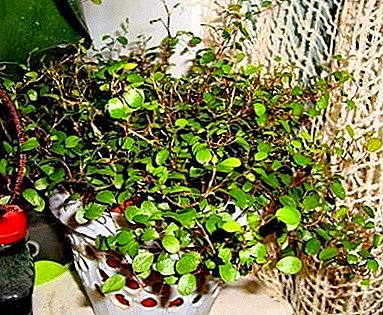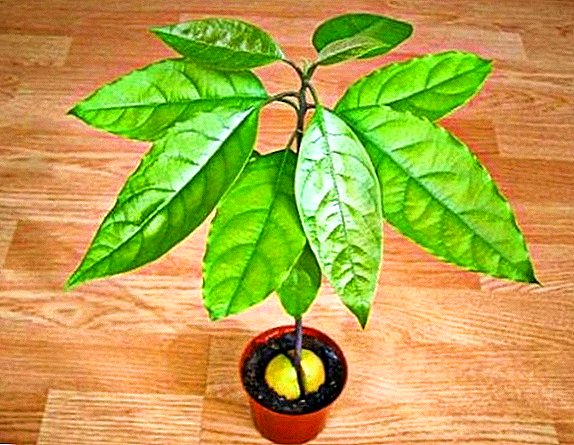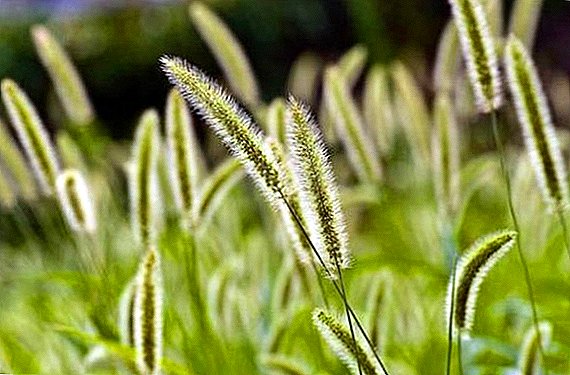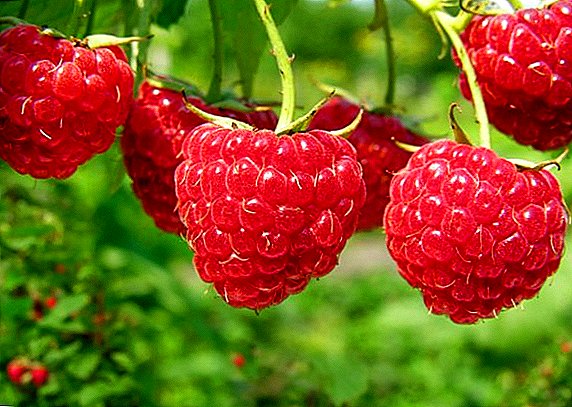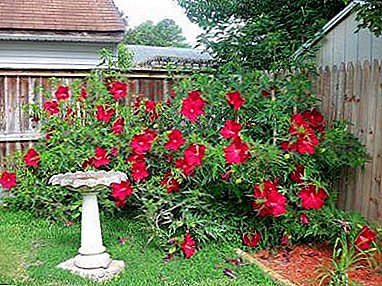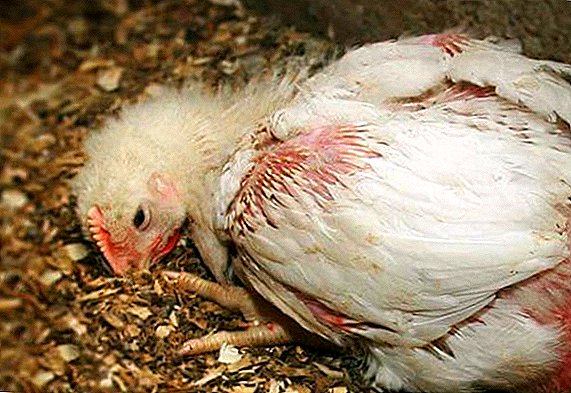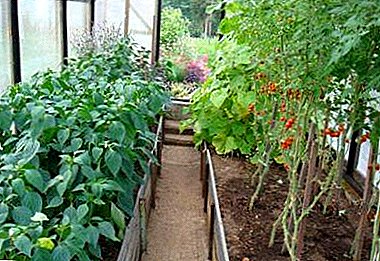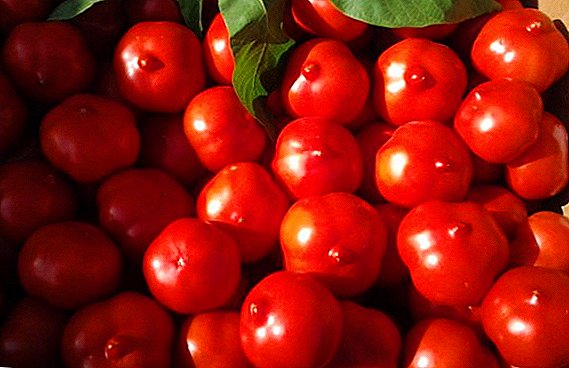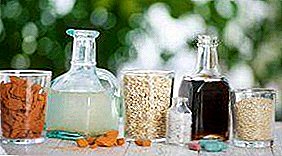 This article focuses on the "flower of samurai" - chrysanthemum. We will talk about how to care for chrysanthemum, how it loves the soil and how often you need to water the plant. Consider possible pests and teach them to fight. We will tell you how to achieve luxurious flowering of chrysanthemums.
This article focuses on the "flower of samurai" - chrysanthemum. We will talk about how to care for chrysanthemum, how it loves the soil and how often you need to water the plant. Consider possible pests and teach them to fight. We will tell you how to achieve luxurious flowering of chrysanthemums.
Did you know? Chrysanthemum depicted on the coins and the state emblem of Japan. In the country, this flower is revered so much that one of the highest awards is called the Order of the Chrysanthemum.
Chrysanthemum growing conditions
Chrysanthemum belongs to the genus of annual and perennial herbaceous plants, which includes 29 species. In nature, the flower grows in the temperate and northern areas of Asia.
When growing chrysanthemums, you need to follow the rules so that the plant blossoms and has a healthy appearance.
The soil
First, consider what kind of land is needed for chrysanthemums.
 Chrysanthemum is demanding on the soil, so the substrate must be selected special. The soil should be nutritious, loose and have good drainage properties. Thus, if you have heavy clay soils in the garden, then before planting a flower, you need to cultivate and apply a sufficient amount of organic fertilizer. Otherwise, the chrysanthemum will grow poorly and will not accumulate enough energy to survive the winter.
Chrysanthemum is demanding on the soil, so the substrate must be selected special. The soil should be nutritious, loose and have good drainage properties. Thus, if you have heavy clay soils in the garden, then before planting a flower, you need to cultivate and apply a sufficient amount of organic fertilizer. Otherwise, the chrysanthemum will grow poorly and will not accumulate enough energy to survive the winter.
Did you know? Chrysanthemum from the Greek translated as "golden flowers", as many species have a yellow color of flowers.
Lighting and humidity
Chrysanthemum is a flower of short daylight. Plant the plant in such a way that at noon its petals do not burn the sun. The plant is light-loving, but the light must be diffused. If the flower is grown at home, the pot should be put on the east or west side. Thus, the plant receives the desired light and does not "burn out".
Humidity should be about 40-50%. Therefore, in spraying needs only in summer or winter (if the flower is contained in the house).
Watering and dressing chrysanthemums
We turn to watering and feeding plants.
 Chrysanthemum, although resistant to drought, but it is not necessary to take it as a rule. The flower should be watered often, but do not wet the ground too much so that the roots are not affected by rot. Moisturize the soil when the top layer of soil dries.
Chrysanthemum, although resistant to drought, but it is not necessary to take it as a rule. The flower should be watered often, but do not wet the ground too much so that the roots are not affected by rot. Moisturize the soil when the top layer of soil dries.
Important! When grown at home, you do not need to install a pallet and pour water there.
Chrysanthemums are very fond of additional feeding. The plant grows well on soils rich in minerals and humus, but the supply of nutrients is not eternal, so fertilizing is necessary and important. The plant loves organic fertilizer in the form of humus and compost. Also, the plant requires peat for normal growth and development.
Feed stages
- First stage - after landing in the ground. Use organics, which add superphosphate.
- Second phase - 2 weeks after the growing season. The third dressing is introduced during the formation of buds (make a mixture in which 25 g of phosphorus and 45 g of potassium).
Fertilizers for chrysanthemum.
Nitrogen Potash. Submitted under the small-flowered plants. In such fertilizers should be more potassium than nitrogen (using a mixture in which 25 g of nitrogen, 25 g of phosphorus and 45 g of potassium).
Important! With excessive saturation of the soil with nitrogen, the plant is drawn out, and the buds lose their color and become faded.
 Nitrogen. Used for tall chrysanthemums with large flowers. In this case, the dose of nitrogen in fertilizers increases (50 g of nitrogen, 25 g of phosphorus and 25 g of potassium). The lack of nitrogenous fertilizers leads to the fact that the plant begins to weaken, the leaves turn yellow and fall off, the flowers become smaller. Nitrogen deficiency is determined by the paleness of the leaves (in a healthy flower the color is dark green).
Nitrogen. Used for tall chrysanthemums with large flowers. In this case, the dose of nitrogen in fertilizers increases (50 g of nitrogen, 25 g of phosphorus and 25 g of potassium). The lack of nitrogenous fertilizers leads to the fact that the plant begins to weaken, the leaves turn yellow and fall off, the flowers become smaller. Nitrogen deficiency is determined by the paleness of the leaves (in a healthy flower the color is dark green).
Phosphorus. This element is necessary both during flowering and during the growing season. Especially important phosphorus for large plants.
Important! A large dose of phosphorus with a small dose of nitrogen increases the safety of flowers in the bouquet.
Phosphorus is recommended to be applied in early spring along with organic fertilizers. In the case of phosphorus, overdose does not carry any danger to the chrysanthemum.
Nuances of care
Every plant needs at least minimal care. Chrysanthemum also requires attention, which we will tell you about.
Transfer
Since the chrysanthemum is an open ground plant, it needs frequent transplants, which are carried out at least once every 3 years.
Did you know? In China, there is a city that is named after a flower - Chu Siena. In this country, chrysanthemum is considered a symbol of autumn and is included in the group of "four noble".
 Let's start with the autumn plant transplant. Transplantation into the pot is carried out during flowering, when the temperature at night drops below zero. The new "house" is filled with nutrient soil, gravel or stones are put on the bottom of the pot for good drainage.
Let's start with the autumn plant transplant. Transplantation into the pot is carried out during flowering, when the temperature at night drops below zero. The new "house" is filled with nutrient soil, gravel or stones are put on the bottom of the pot for good drainage.
The place for the winter period is chosen cool (+3 ˚C will be an ideal temperature), with poor lighting. When the chrysanthemum blooms, you need to cut the flower, leaving about 15 cm of the stem, cover with a paper bag and leave it until spring.
Important! When transplanting need to be careful with the roots. The slightest damage is detrimental to chrysanthemum.
Spring transplantation is carried out after warming, when at night the temperature does not fall below zero. To begin with, remove the sack from the pot, so that new sprouts appear. When the chrysanthemum "wakes up", it can be planted in open ground.
Trimming and Pinching
For a plant, pruning and pinching are very important, since after these actions new lateral shoots are formed and the development of the root system improves.
Important! Small-flowered varieties of chrysanthemum only pinch. Trimming does not apply.

Pinching and pruning are techniques during which the upper part of the flower's shoot is cut. The difference between pinching and trimming - in the amount of the top, which is cut. In order to get a lush bush, you need to pruning chrysanthemums in the spring. Also pruning is carried out if new cuttings are needed. If cuttings are not required - make a nip.
Let's start with pinching. Large-flowered chrysanthemums pinch when the plant reaches a height of 15 cm. Pinching is to remove the apical bud. Of all the shoots leave 2-3, which remove all side shoots and buds, except for the apical.  Chrysanthemum bud formation: 1 - spring bud; 2 - the first crown; 3 - the second crown; 4 - the third crown
Chrysanthemum bud formation: 1 - spring bud; 2 - the first crown; 3 - the second crown; 4 - the third crown
Pinching small-flowered plants is the formation of a well-developed crown with a large number of shoots. For this, pruning of the shoot over the 5th leaf is performed. From the remaining buds appear shoots that pinch over the 8th leaf. After pinching, we get a plant with a lush crown, which gives about 30 inflorescences.
Important! After the first pinching, you need to water the plant with a solution of fertilizers that contain nitrogen.
Pruning chrysanthemum. Most modern chrysanthemum hybrids do not need pruning buds, but the general rule is this: the smaller the buds, the larger the flowers. If you want to get a lush inflorescence of large diameter - you need to cut off all the side shoots and buds, leaving one main.
Wintering
If you do not repot the chrysanthemum in the pot for the winter, then you should take care of the shelter of the plant. Let's write out the "instruction" of preparation.
 Preparation of plants for winter begin in early September. The plant is fed with phosphorus-potassium fertilizers, which increase the frost resistance of the flower. After feeding, pruned dry branches and check for diseases (if the flower is sick, we are treating, and only then we continue to transplant). After processing and testing, chrysanthemum spud and level the soil around the plant. Before planting chrysanthemums for the winter you need to shorten the stem so that there is no more than 10 cm left.
Preparation of plants for winter begin in early September. The plant is fed with phosphorus-potassium fertilizers, which increase the frost resistance of the flower. After feeding, pruned dry branches and check for diseases (if the flower is sick, we are treating, and only then we continue to transplant). After processing and testing, chrysanthemum spud and level the soil around the plant. Before planting chrysanthemums for the winter you need to shorten the stem so that there is no more than 10 cm left.
The plant has been prepared, now it is worth making a shelter. For this purpose, bricks are placed around the bush, and boards are placed on top of them. Such a construction will save the plant from freezing and will not allow it to "suffocate". In this case, it is important to observe the following rules: Do not cover chrysanthemums until severe frosts, as they may rot from an overabundance of moisture; Shelter should not be very heavy and dense.
Another option (more difficult in terms of execution) suggests the following: Dig a trench 50 cm deep and 0.7 m wide; dig up chrysanthemum bushes (keep a clod of earth on the roots) and place them in a trench. From above you need to fall asleep all the dry leaves or straw. When it starts to freeze, you need to cover the trench with leaves of metal or slate and cover it with earth on top (the layer should be about 12-15 cm).
Important! The minus of the second method is the inability to check the bushes. They can wake up earlier and sprout sprouts that will begin to stretch towards the light. In this case, the plant will spend a lot of strength and may die.
Chrysanthemum reproduction
Chrysanthemum can be propagated in three ways:
- grafting,
- dividing the bush
- seeds.
Cuttings
The best option for cutting chrysanthemums is from March to the end of May. Early varieties are grafted in March or April, later - in April or May. During intensive growth of the flower it is often watered and fertilized once every 2 weeks. The cuttings are broken out (less often cut off) from the shoots, on which there are at least 4 leaves (the cutting itself should also have 3-4 leaves). 
Important! After pruning plants, the instrument must be disinfected to prevent the transfer of disease.
On the cut cuttings remove the bottommost sheet, others save. Planted escape into the substrate, which "breathes" and passes moisture. To do this, use peat, perlite or a mix of turf land, peat and sand (in equal parts). The soil layer must be at least 10 cm.
Moisten it before planting. Sow cuttings to a depth of 1.5 cm so that future roots get the maximum nutrients. When planting, it is necessary to maintain the temperature in the region of 17 ° C (a higher temperature may lead to the decay of the shoot). Do not forget about the lighting, which is very important for photosynthesis. At night, 100 watt lamps are used for additional lighting.
In the first week after planting, you should regularly moisten the soil and air. Watering is carried out every 2 days.
The rooting of cuttings in January-March is 24-25 days, in April-May - about 18 days.
After rooting, chrysanthemum plants are fed 2 times a week with full-value mineral fertilizers.
Did you know? Tea from chrysanthemums is very popular in Asia. Tea from this flower has healing properties and protects the body from cardiovascular diseases.
Dividing bush
Chrysanthemums can be propagated by dividing the bush. To do this, dig the plant immediately after flowering and thoroughly washed the roots. If the bush is very high - it should be cut so that the flower does not experience a lack of moisture (the longer the shoot, the more it evaporates). 
Also removed central lignified shoots. Further, a part of the peripheral part is broken out (the knife can be not used) with developed kidneys and is used for planting.
Before planting, you need to dig a hole of the same depth on which the mother bush “sat”. After planting, the young plant is watered abundantly.
Seeds
We turn to growing chrysanthemums from seeds at home. This method can grow both annuals and perennial plants.
You can sow the seeds immediately in the ground, and you can - in the pot. When sowing in open ground, the seeds are placed in the wells (the distance between the holes - 25 cm) 2-3 pieces, watered with warm water and sprinkled with earth. A week after sowing, you need to feed the plant with highly diluted liquid fertilizer. When young chrysanthemums grow to 10 cm in height, it is worth leaving one of the strongest of 2-3 plants. Landing in open ground is carried out in the month of May.
The disadvantage of planting in the open ground is the flowering time of chrysanthemum, which will occur only in late August.

When seeding in the pot, the beginning of the "works" is transferred to the end of February. To do this, take shallow boxes, put drainage in the form of gravel on the bottom and fill it with earth (soil + peat + humus in equal amounts). When sowing perennial chrysanthemums, the seeds are left on the surface, the annuals are placed at a depth of 5 mm.
After that, the earth is sprayed with water, covered with glass or film and put in a warm place (+ 24-25 ˚C). Periodically crops need to be checked, sprayed with warm water and aired. Young plants sprout 14 days after planting.
If the seedlings have grown thickly, then after the appearance of 3-4 "real" leaves, they are transplanted into cups or other, more capacious containers.
Important! Before transplantation, it is necessary to moisten the soil so as not to damage the young roots of the plants.
Immediately after transplantation, the plants are sprayed with the drug "Zircon" to help the chrysanthemum settle down better.
After the most difficult stage, the care of young plants is reduced to maintaining the temperature at the level of 16-18 С.
In the open ground seedlings are planted in late May - early June.
At this breeding seed completed. After transplantation in open ground, the conditions of care are the same as for an adult plant.
Major pests, ways to combat them
Chrysanthemum is afraid of pests as well as other garden plants. That is why it is important to know the cause of the poor state of the flower and to deal with parasites on time. We turn to the consideration of the pests of chrysanthemum.
Aphid
 Aphids often appear on chrysanthemums, so this is the first pest on our list to help you cope.
Aphids often appear on chrysanthemums, so this is the first pest on our list to help you cope.
It affects this pest, in the first place, unblown buds of the plant. The result of this parasite are twisted leaves and deformed buds.
Aphids not only deprives the plant of strength, but also is a carrier of diseases, therefore it must be fought the sooner the better.
Traditional methods of struggle offer a huge number of "drugs" to combat aphids. Here are the most popular:
- decoction of dried onion leaves (used at any time when chilled);
- tincture of garlic (crushed garlic is infused for 2 hours; the infusion is diluted with water and sprayed the plant every 3-4 hours);
If folk methods do not suit you, you can use the following drugs:
- Karbofos, metaphos, phosphomide (dissolve 20 g per 10 l of water and spray the entire plant completely);
- Chemical aerosols from flower parasites (they offer a simpler version of use).
Spider mite
Another unpleasant "guest" for your flower. You can only look at it with a magnifying glass, but the small web on the plant can be seen with the naked eye. 
These mites, like aphids, suck the plant sap. They bite through the cells and feed on the flower’s nutrients. With a strong lesion leaves lose color and dry out.
Important! Spider mites cause the greatest harm in dry and hot weather.
Consider methods of dealing with a pest.
- UV light. Mite does not tolerate ultraviolet light, so it is enough once a week using a home UV lamp to light the flower for 2-3 minutes.
- Alcohol treatment. The whole plant is wiped with 96% alcohol, with a small layer of the solution applied with cotton. The treatment is repeated after a week.
Folk methods of tick control:
- tincture of garlic (500 g of minced garlic is poured over 3 liters of water and infused for 5 days in a dark place; 60 ml of the infusion is diluted in 10 liters of water and 50 g of soap are added);
- chamomile tincture (1 kg of dry crushed chamomile pour 10 liters of hot water and insist 14 hours; the solution is diluted with water in a ratio of 1: 3 and soap is added);
- tincture of dandelion medicinal (0.5 kg of fresh leaves insist 2-4 hours in water 40 ° C; treatment is carried out after the leaves bloom and after flowering).
Remember! Mite can return to the plant, so after processing the chrysanthemum, you need to disinfect everything within a radius of 1 square. m from a flower.
Chrysanthemum nematode
These are small worms that cannot be seen with the naked eye. After a nematode is damaged, black dead tissues appear in the form of spots on the plant, which are located between the veins of the leaf. 
There are some varieties of chrysanthemums that are resistant to nematode damage:
- Sunflower,
- Katie Ernst,
- Bergatet.
To rid the plant of nematodes, it is necessary to conduct heat treatment of the plant with warm water 45 С. You also need to remove the affected parts of the plant mechanically.
If the previous measures did not help, then, unfortunately, the plant must be destroyed along with the land in which it grew.
Important! When planting new plants, it is necessary to avoid land plots where nematode damages of plants were observed.
Diseases of chrysanthemums, their treatment
In the previous topic, we looked at the parasites that prevent your flower from growing and developing; now we turn to the description of diseases and their treatment.
Gray rot
 Gray rot is a fungus. When a flower is infected, brown spots appear on the leaves, which grow to the edges of the leaf. With leaves, rot can "migrate" to the stem, forming light brown spots on it.
Gray rot is a fungus. When a flower is infected, brown spots appear on the leaves, which grow to the edges of the leaf. With leaves, rot can "migrate" to the stem, forming light brown spots on it.
Ultimately, the flower turns into a wet brown mass and dies. All affected parts of the plant are covered with a dense gray bloom of the fungus.
Главной причиной развития грибка является повышенная влажность воздуха и почвы. Гниль чаще всего развивается весной и осенью на срезах и "ранах" растения.
Чтобы избавиться от серой гнили, используют следующие фунгициды:
- "Ronilan FL 0.15%",
- "Rovral 50 SP 0.15%",
- "Sumileks 50 NP 0.1%",
- "Fundazol 50 SP 0.1%".
Mealy dew
Mealy dew appears as white or gray-white scurf. Signs of the disease appear on young leaves at the beginning of the growing season. With a strong fungus infestation, young buds do not bloom and dry out.  The causative agent is microscopic fungi that parasitize on the flower.
The causative agent is microscopic fungi that parasitize on the flower.
Mealy dew infects the plant in late July - August. This happens because of the accumulation of dew on the leaves, when using a large amount of nitrogen fertilizers or lack of potassium.
To get rid of the disease, you need:
- provide regular watering
- airing and good lighting of the plant.
- remove diseased and dried leaves from the plant.
You can also use the following drugs:
- "Anvil 5 SK 0.06%",
- "Bayleton 25 SP 0.05%",
- "Triadimefon 25 SP 0.05%",
- "Sistan 12 KE 0.03%".
Important! Different varieties of chrysanthemum exhibit different sensitivity to chemical agents, therefore, it is necessary to carry out a trial spraying of a small area before the plant is fully treated.
Leaf Rust
 Microscopic fungus, infection which manifests itself in the form of small yellowish-green spots on the leaves. Gradually the color of the leaves changes to yellow with black dry spots, then dies off.
Microscopic fungus, infection which manifests itself in the form of small yellowish-green spots on the leaves. Gradually the color of the leaves changes to yellow with black dry spots, then dies off.
The fungus twists the leaves down, which is why the chrysanthemum changes its appearance.
To get rid of the disease, you need to feed the plant phosphate-potassium fertilizers. The bush should be sprayed with fungicides (Fundazole or 1% colloidal sulfur). All affected leaves are cut off and burned off-site.
Root bacterial cancer
 With the defeat of root cancer on the plant growths are formed (much like a tumor in animals). The causative agent of the disease lives in the soil. With the defeat of chrysanthemum cancer grows rapidly and destroys the plant. There is no cure for this disease, so the bush is dug out and burned.
With the defeat of root cancer on the plant growths are formed (much like a tumor in animals). The causative agent of the disease lives in the soil. With the defeat of chrysanthemum cancer grows rapidly and destroys the plant. There is no cure for this disease, so the bush is dug out and burned.
Important! It is necessary to disinfect the soil after the affected chrysanthemum before planting other plants.
So that your plant does not hit the cancer, you need to carry out prevention. It is necessary to dig up the soil in the fall and remove all plant residues from the site. Also take care to improve drainage.
Leaf spot
The spotting, or septoriosis of chrysanthemum is manifested in the form of pale areas on the leaves. Orange spots appear on the back of the sheet. Septoria is also caused by microscopic fungi that are dangerous to the plant. 
To get rid of the disease, you need to remove and burn the affected leaves, spray fungicides:
- "Polycarbacin (30-40 g / 10 l)",
- "Homezin (40 g / 10 l)",
- "Kuprozan (50 g / 10 l)".
We have brought to you the most important information about the cultivation and reproduction of chrysanthemums. They told about the nuances of flower care, both in the open field and at home. They told about pests and diseases that can and should be dealt with. Follow all the listed rules, and the flower will delight you with abundant flowering and healthy appearance.


